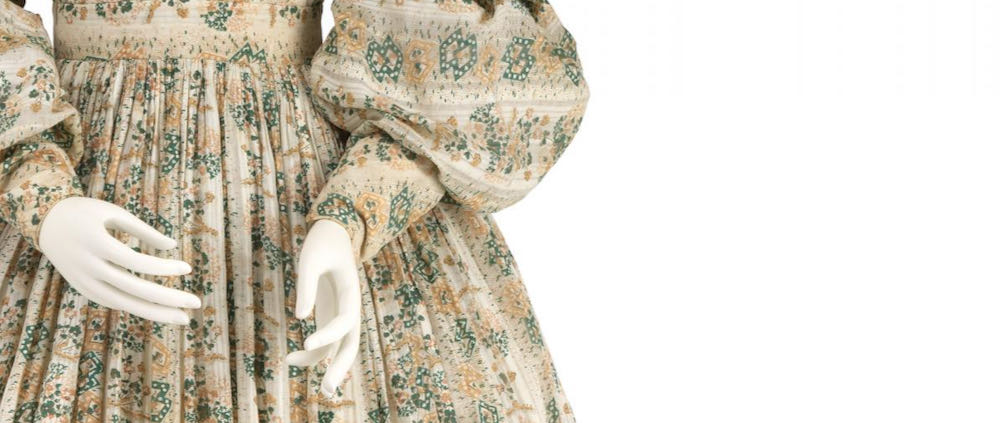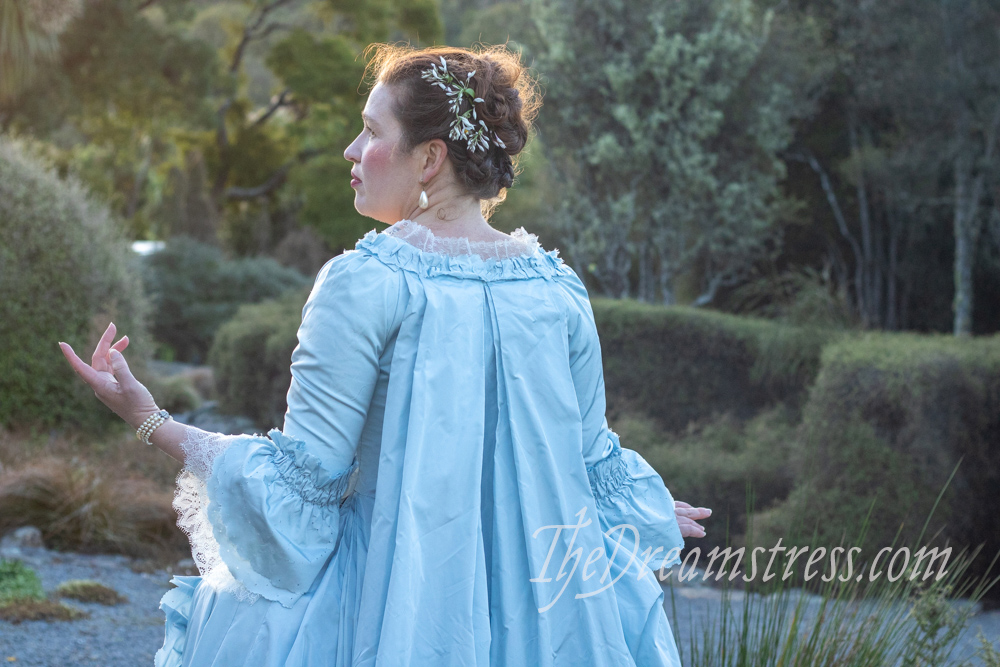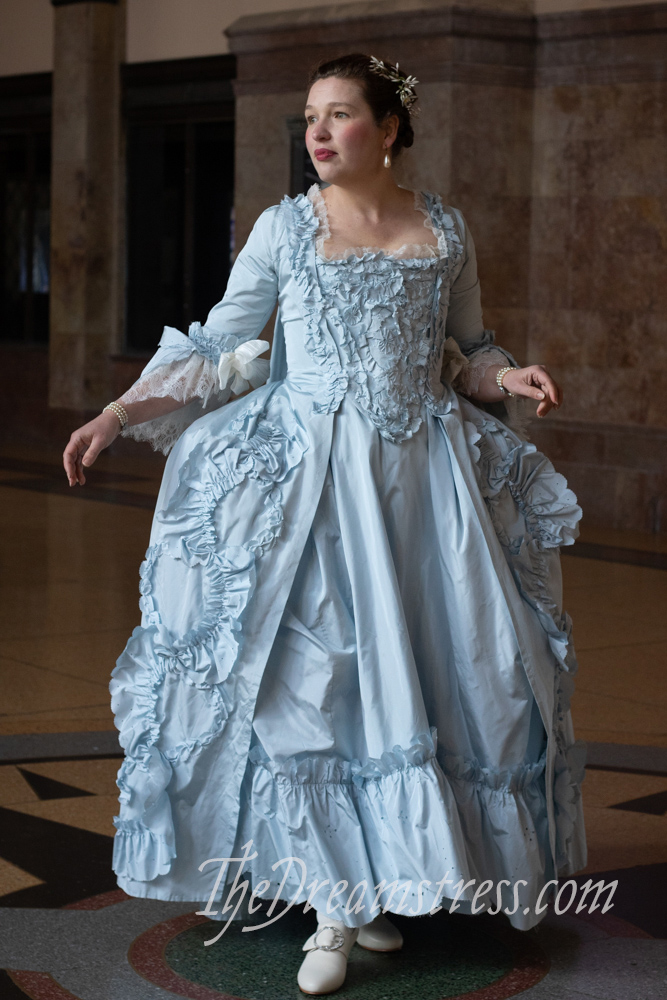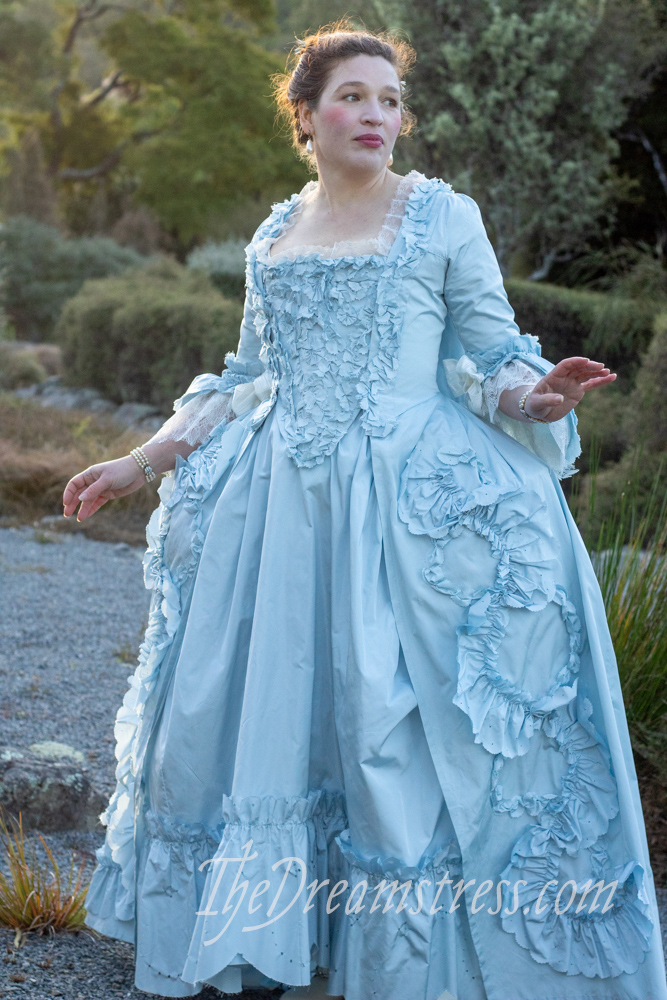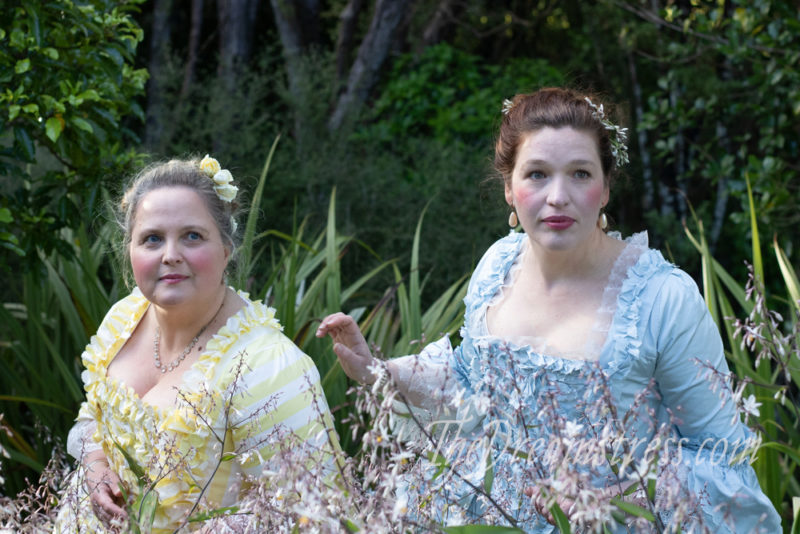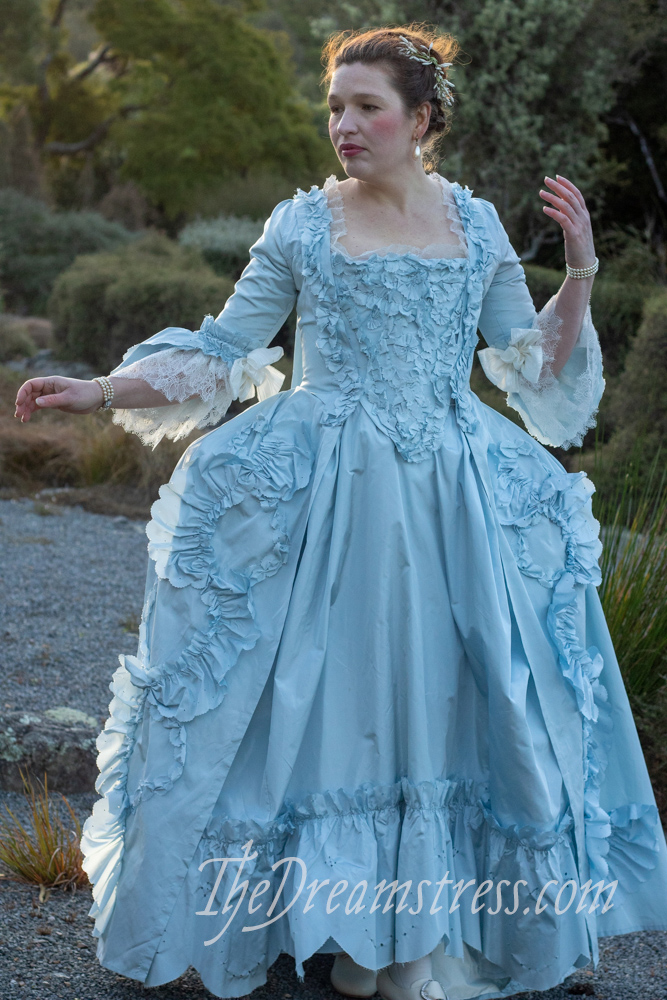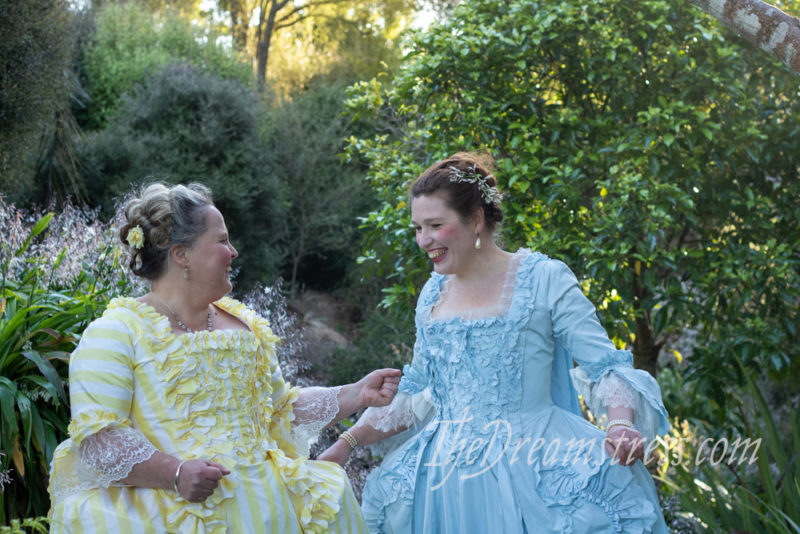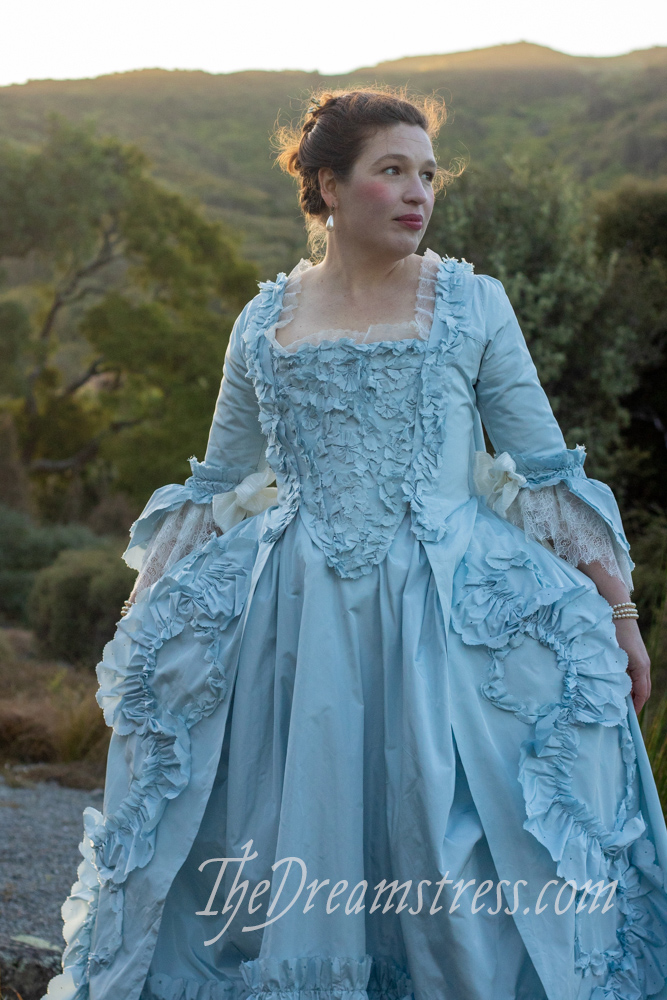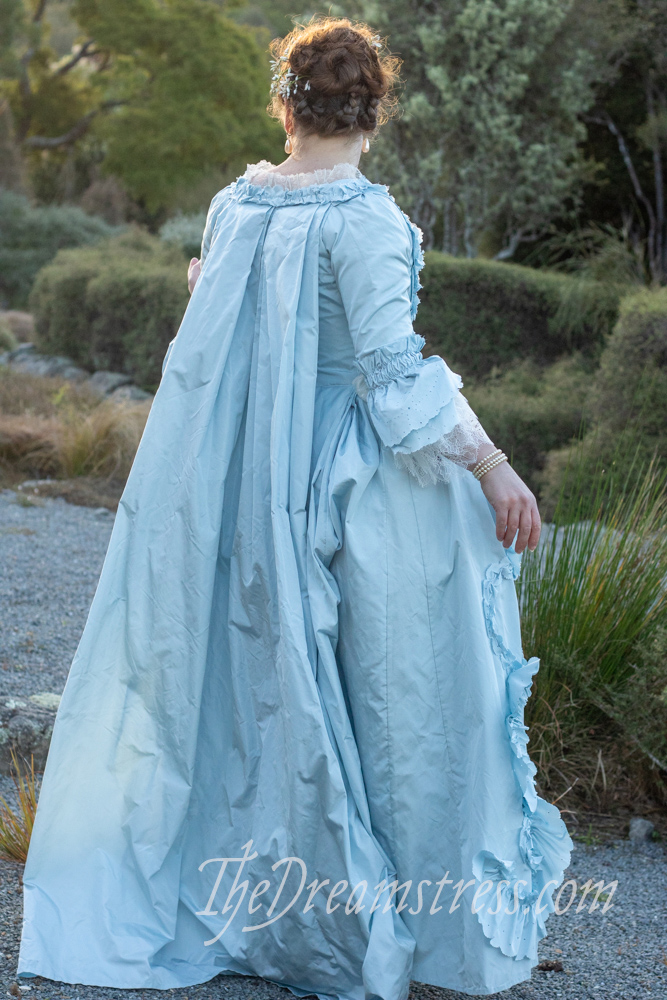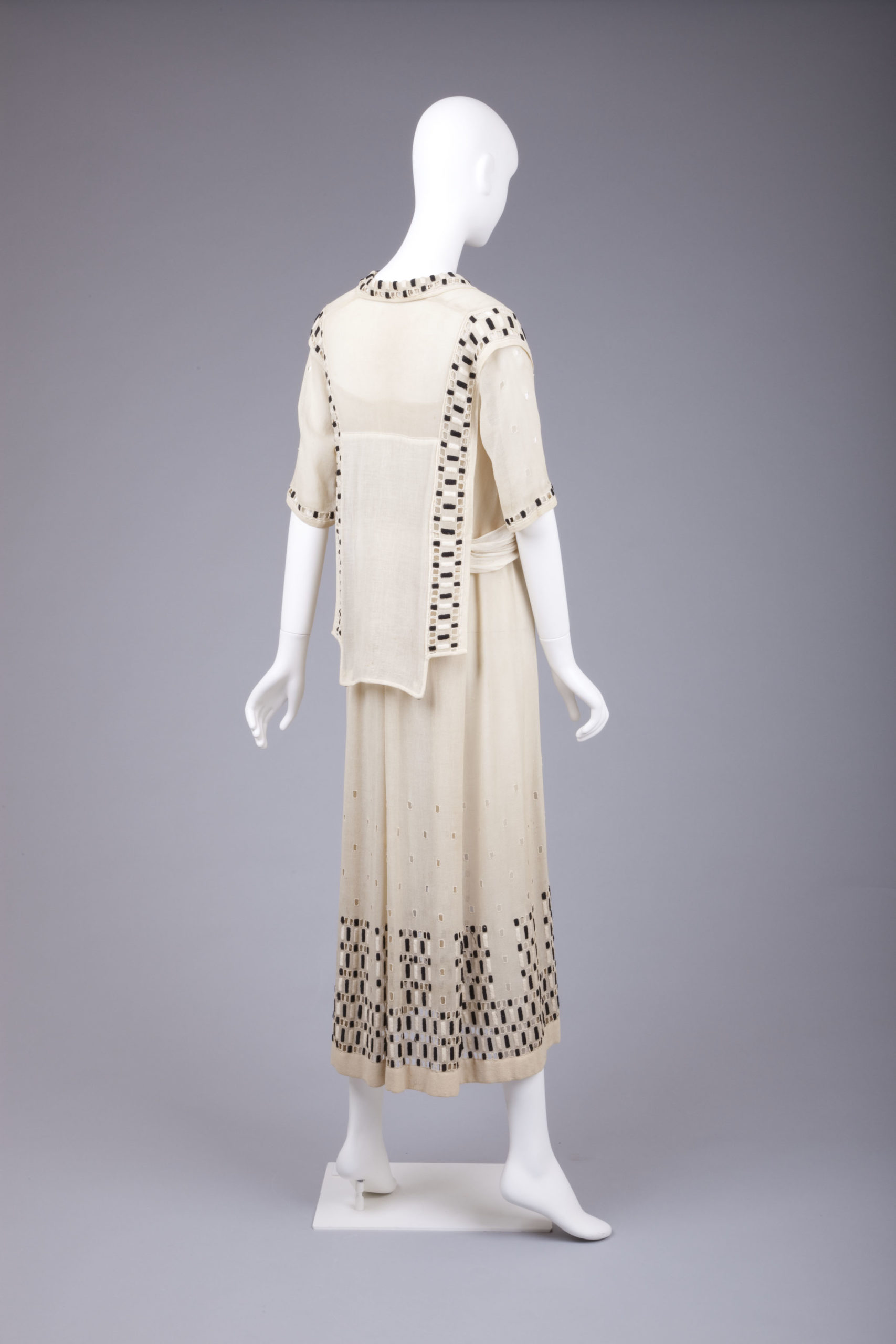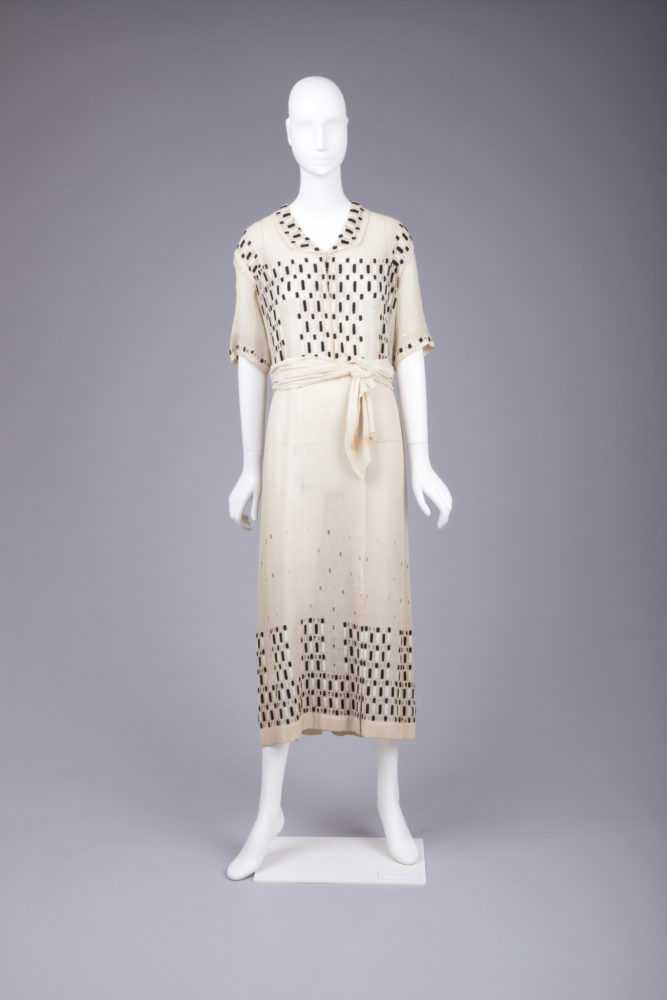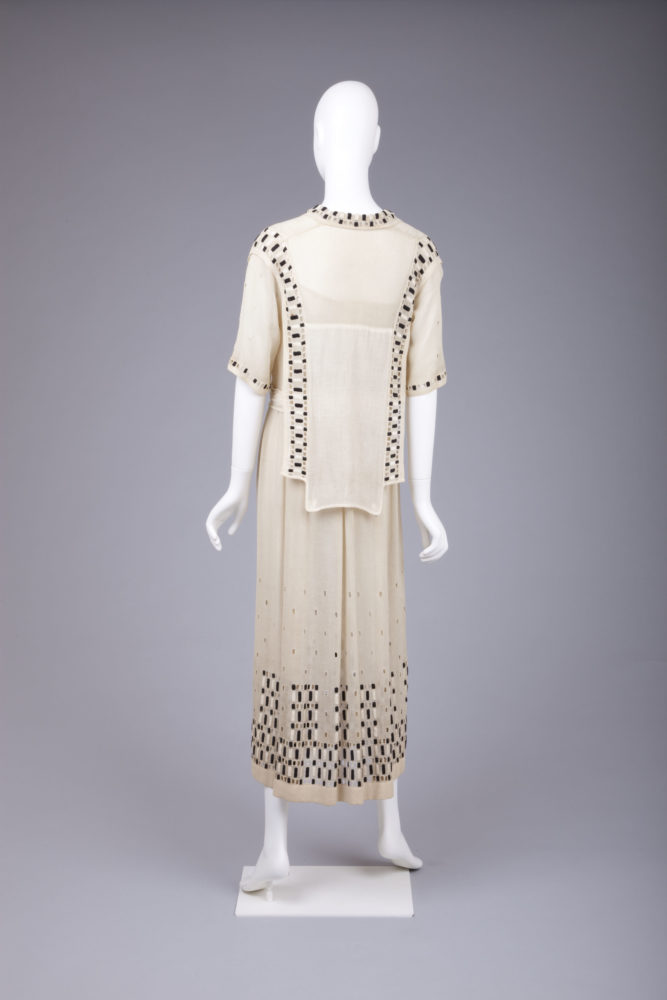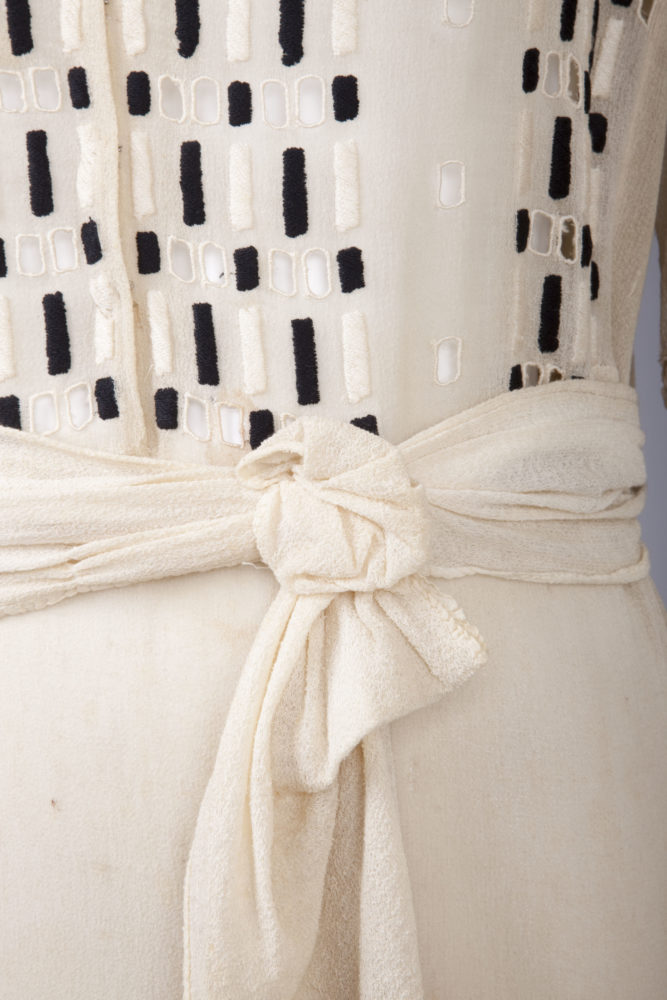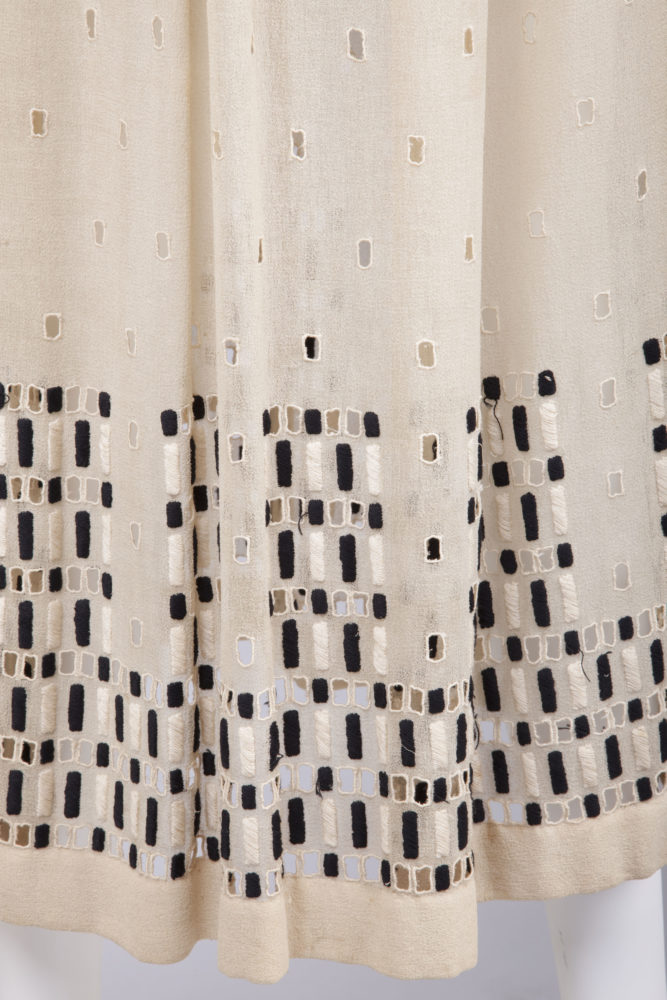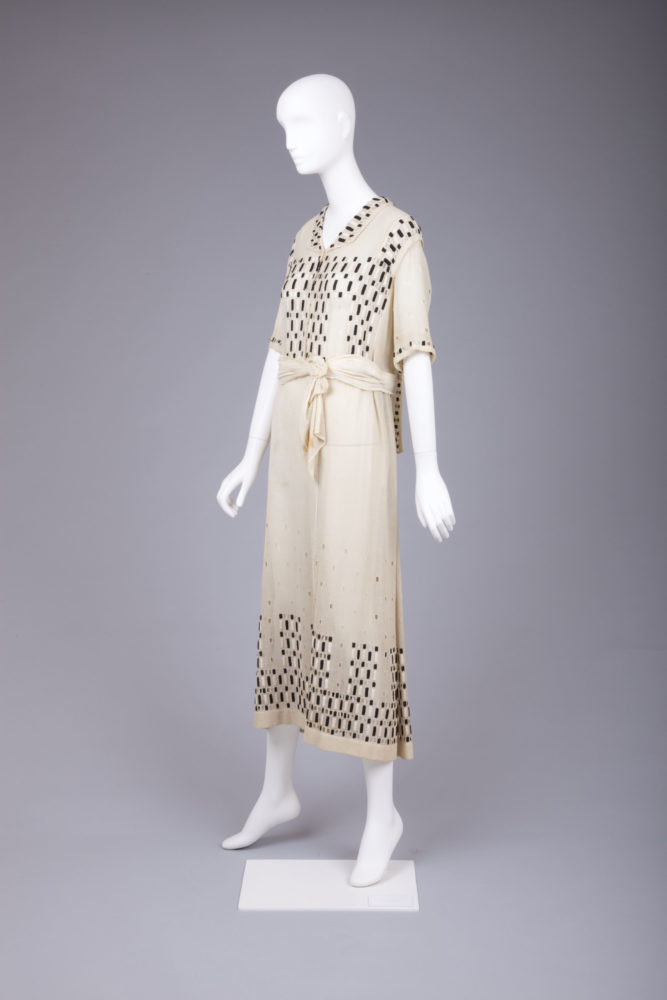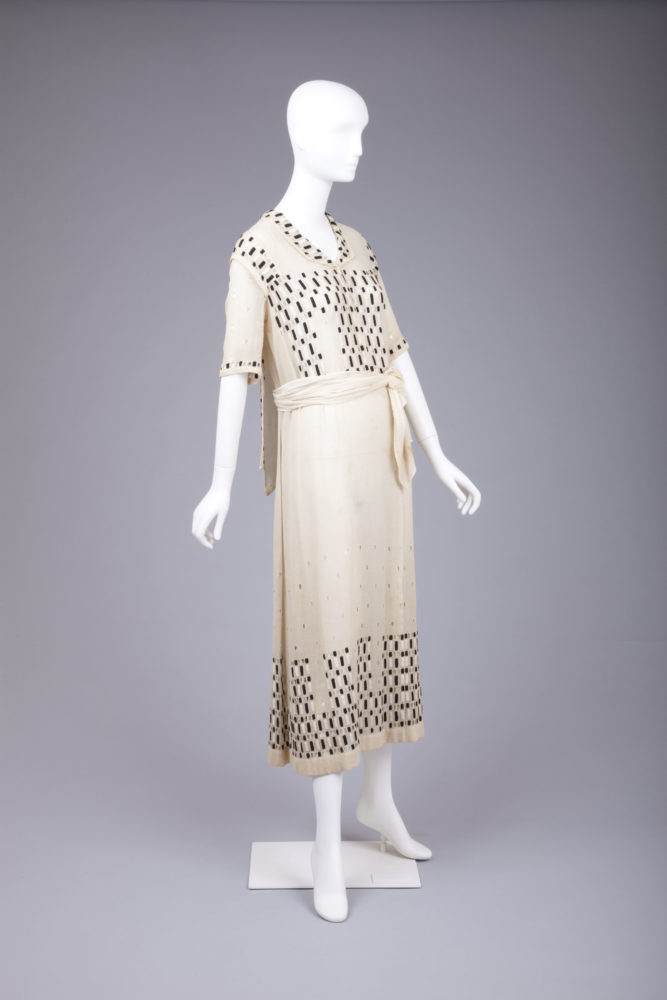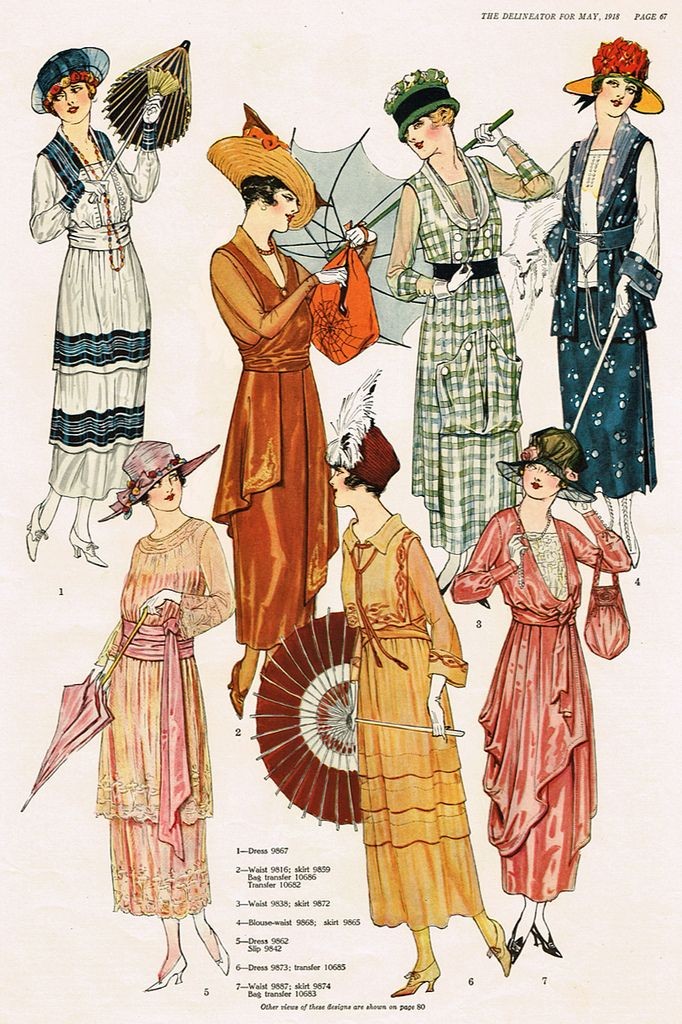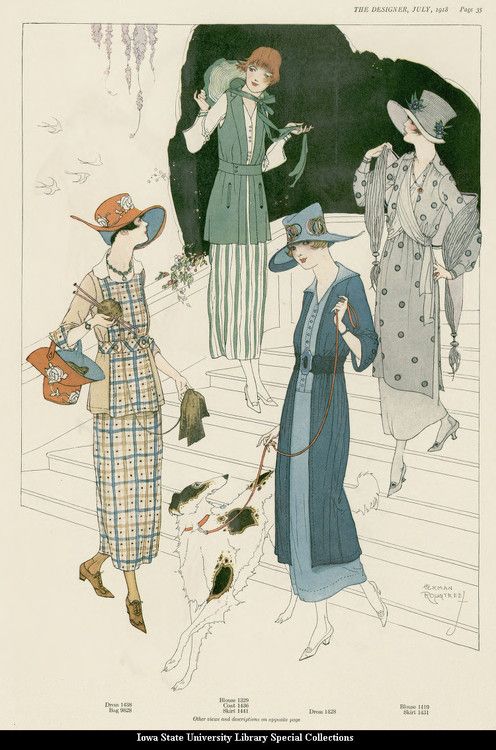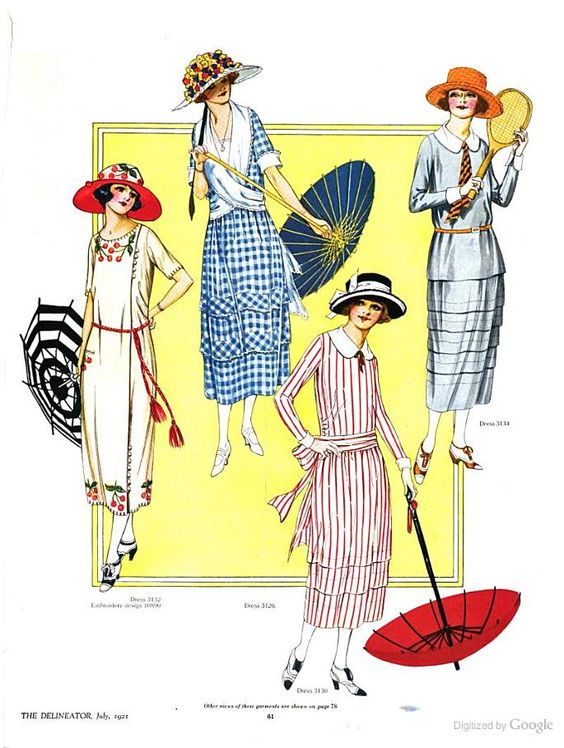I’ve got a real soft spot for 1830s day dresses. I like how romantic they are, and how ridiculous they are. Most of all, I like the fabric. It was such an inventive period in textile design, with new technology contributing to a profusion of interesting experimental textiles. Today’s dress features one of those fabrics: a cotton print with geometric and floral patterns in fawn and green.
Last Week: a late 1910s dress with very modern embroidery
Ratings on last week’s dress started with rave reviews, and gradually slid down the scale, so that the last batch of ratings were pretty mediocre. There’s some interesting psychology there.
Those who loved it liked the experimentation and modernity, and could imagine family members wearing it. Those who weren’t so impressed found it awkward and uninteresting.
The Total: 8.6 out of 10
Exactly the same as last week! Although, unlike last week there was actually one rating for 8.5
This week: an 1830s morning dress of printed cotton
This week’s Rate the Dress was rather a random choice: I had an idea for something quite different, but went through my ‘Rate the Dress’ possibilities album it instantly caught my eye:
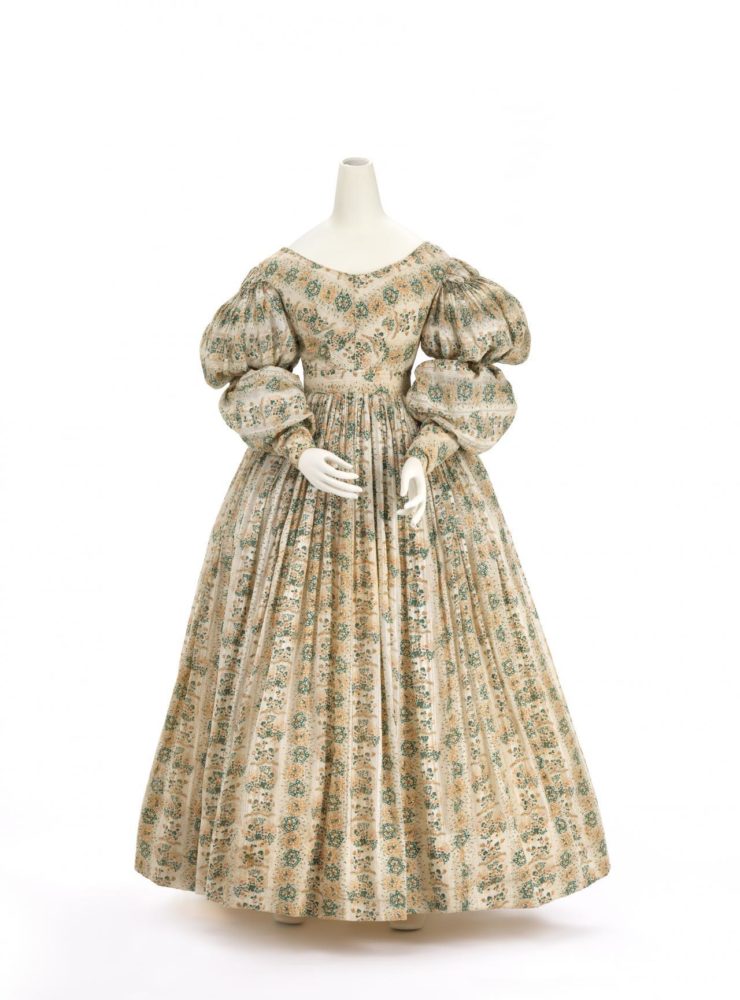
I’m not sure exactly why, but I like the juxtaposition between this week’s dress, and last week’s. Both garments are from eras when fashion was undergoing a huge change, and when there was a lot of experimentation, both in silhouette, and materials.
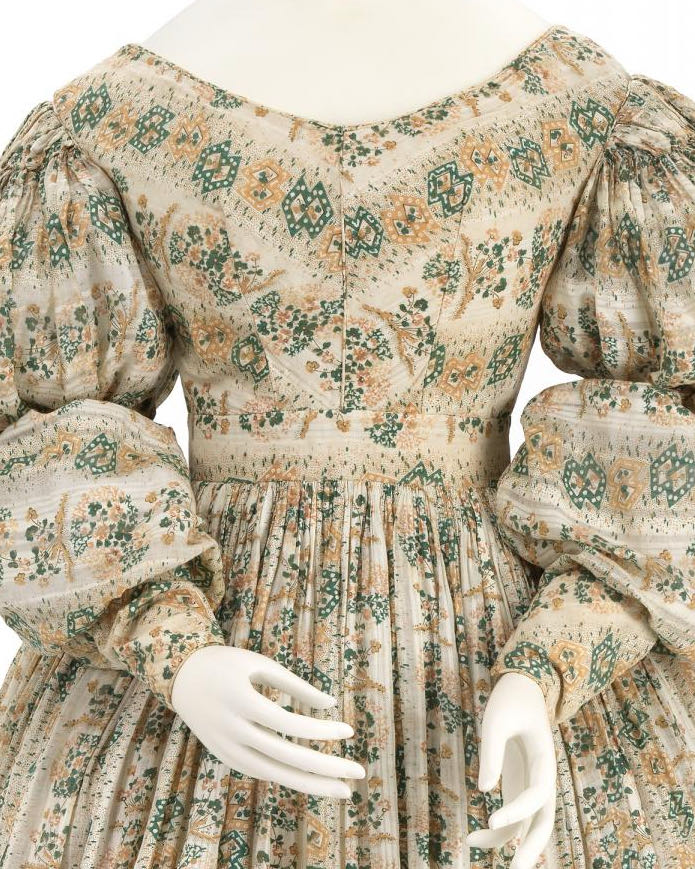
There’s a great contrast between the silhouette of this dress and the 1910s embroidered frock. The latter so sleek and simple, the former so full and romantic, all puffs and gathers.

And yet, in the way both play with geometry and lines, and use a fairly restrained palette for impact, there are similarities as well.
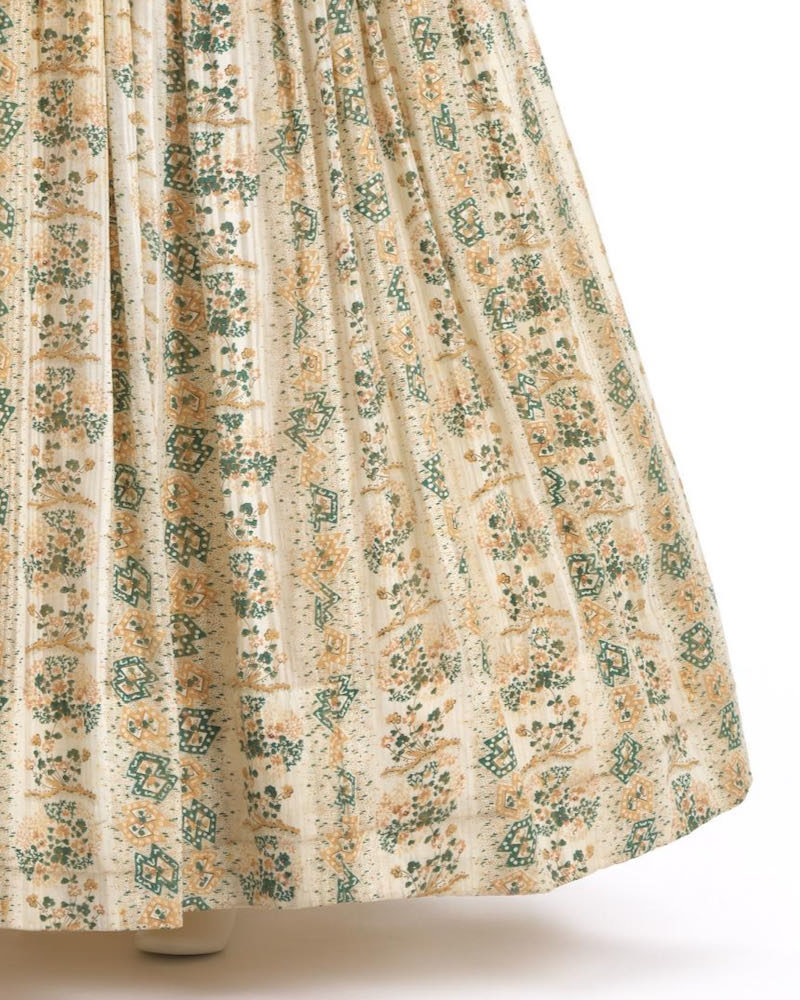
This week’s dress is slightly less formal than last weeks: it’s a morning dress, for wearing earlier in the day, to less formal events. You’d put it on to look nice while receiving visitors, to go visiting yourself, or for running simple errands or doing your shopping. It would be worn with a pelerine, fichu, or chemisette with large falling collar. It might be paired with a shawl if it was cold enough, and would need a bonnet if you were going outside.
Here’s a similar, but slightly more formal and fashionable, morning dress for visiting:

What do you think?
Rate the Dress on a Scale of 1 to 10
A reminder about rating — feel free to be critical if you don’t like a thing, but make sure that your comments aren’t actually insulting to those who do like a garment. Phrase criticism as your opinion, rather than a flat fact. Our different tastes are what make Rate the Dress so interesting. It’s no fun when a comment implies that anyone who doesn’t agree with it, or who would wear a garment, is totally lacking in taste.
As usual, nothing more complicated than a .5. I also hugely appreciate it if you only do one rating, and set it on a line at the very end of your comment.

